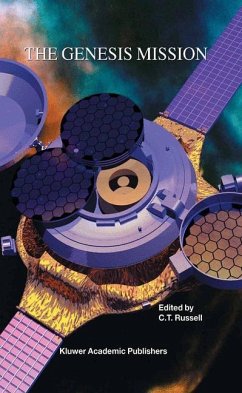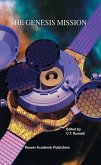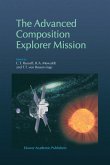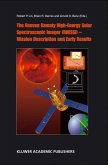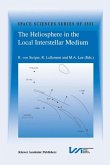NASA's Genesis mission, launched on August 8, 2001 is the fifth mission in the Discovery series. Genesis addresses questions about the materials and processes involved in the origin of the solar system by providing precise knowledge of solar isotopic and elemental compositions for comparison with the compositions of meteoritic and planetary materials. This book describes the Genesis mission, the solar wind collector materials, the solar wind concentrator and simulations of its performance, the plasma ion and electron instruments, and the way these two instruments are used to determine the solar wind flow regime on board the spacecraft. The book is of interest to all potential users of the data returned by the Genesis mission, to those studying the isotopic and chemical composition of the early solar system whose work will be influenced by the measurements made by Genesis and by all those interested in the design and implementation of space instruments to study space plasmas.
Hinweis: Dieser Artikel kann nur an eine deutsche Lieferadresse ausgeliefert werden.
Hinweis: Dieser Artikel kann nur an eine deutsche Lieferadresse ausgeliefert werden.
The Genesis Mission, edited by C.T. Russel, ISBN 1-402-01125-3
The Observatory, vol.124 No. 1180 2004
'The book provides an excellent description of the mission. There is a strong emphasis on the constraints needed to ensure scientific success, e.g. high levels of cleanliness in preparation, the care with which recovery is planned (in-atmosphere pick-up by helicopter), and the strategic planning for post-flight analysis, including archaeological analysis of recovered spacecraft components to establish context (e.g. example contamination by microparticle impacts). It shows that Genesis is an excellent example of a small mission targeted on one important scientific question and optimized for that purpose - a master of one task rather than trying to do many different things on one platform .' (Mike Hapgood)
The Observatory, vol.124 No. 1180 2004
'The book provides an excellent description of the mission. There is a strong emphasis on the constraints needed to ensure scientific success, e.g. high levels of cleanliness in preparation, the care with which recovery is planned (in-atmosphere pick-up by helicopter), and the strategic planning for post-flight analysis, including archaeological analysis of recovered spacecraft components to establish context (e.g. example contamination by microparticle impacts). It shows that Genesis is an excellent example of a small mission targeted on one important scientific question and optimized for that purpose - a master of one task rather than trying to do many different things on one platform .' (Mike Hapgood)

